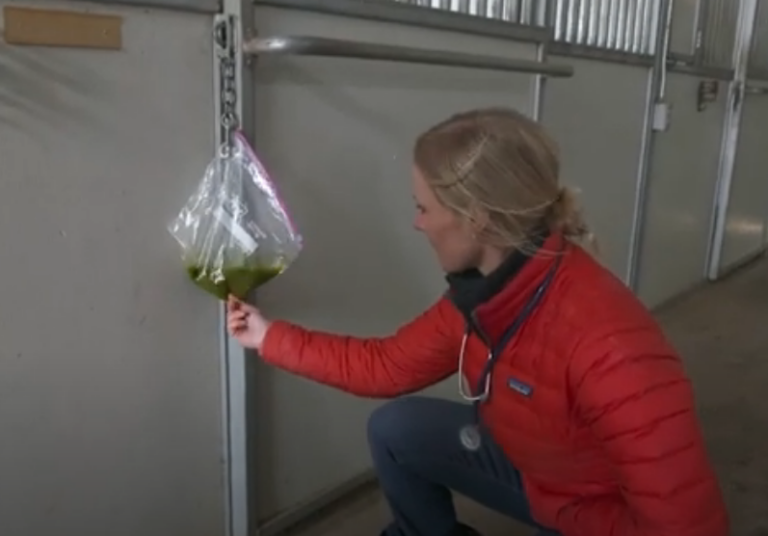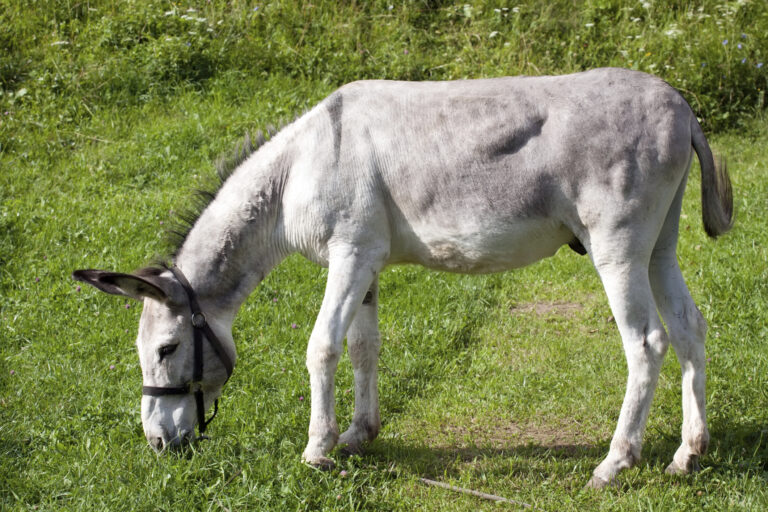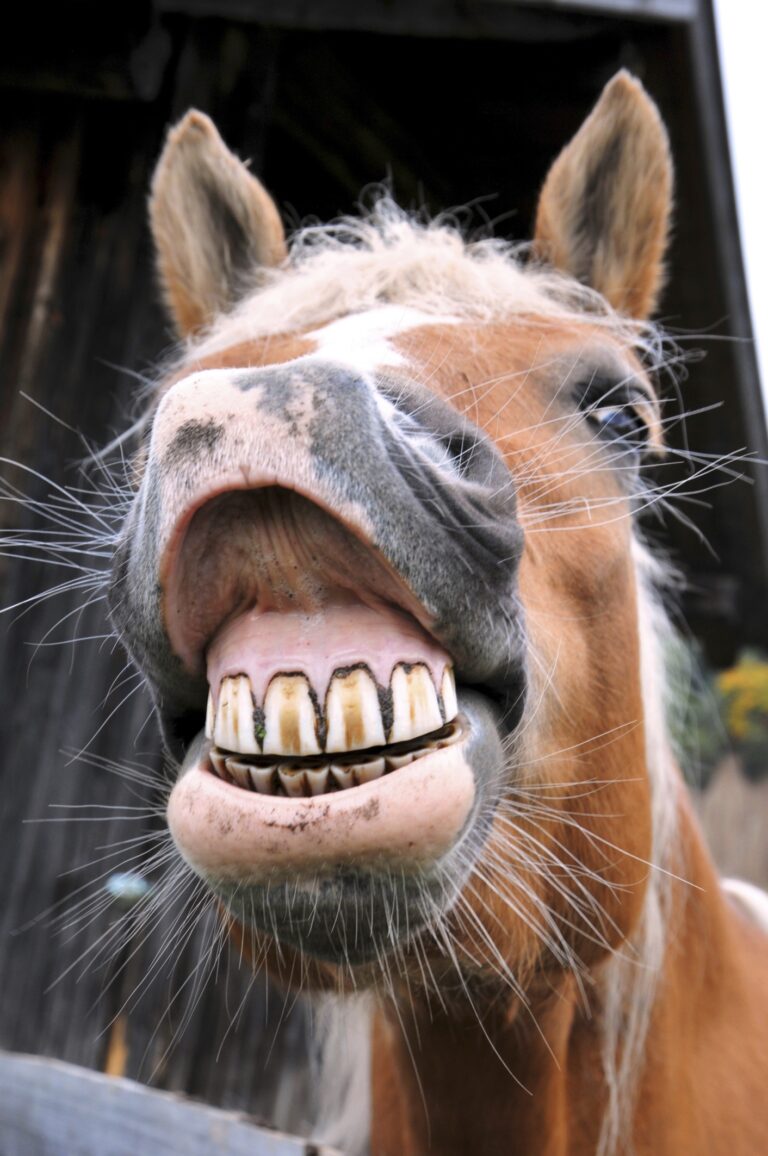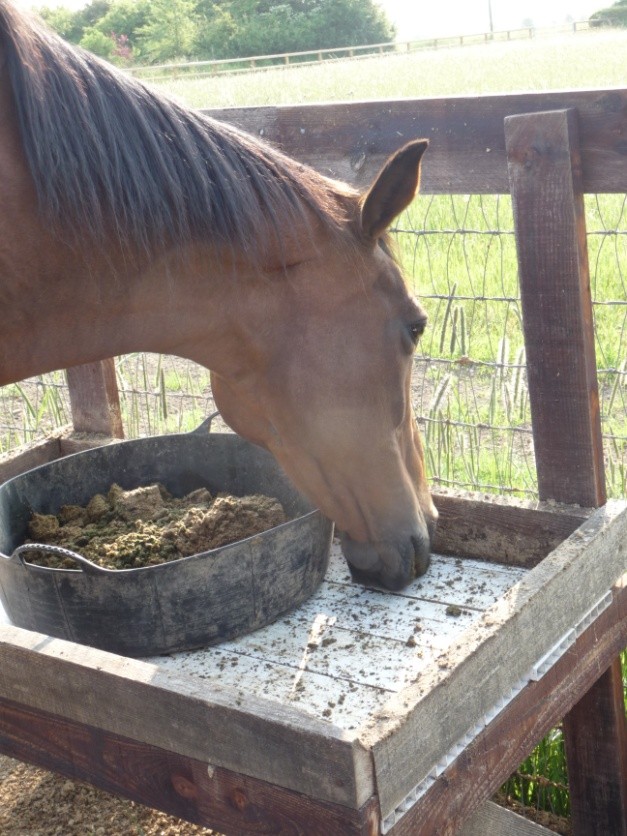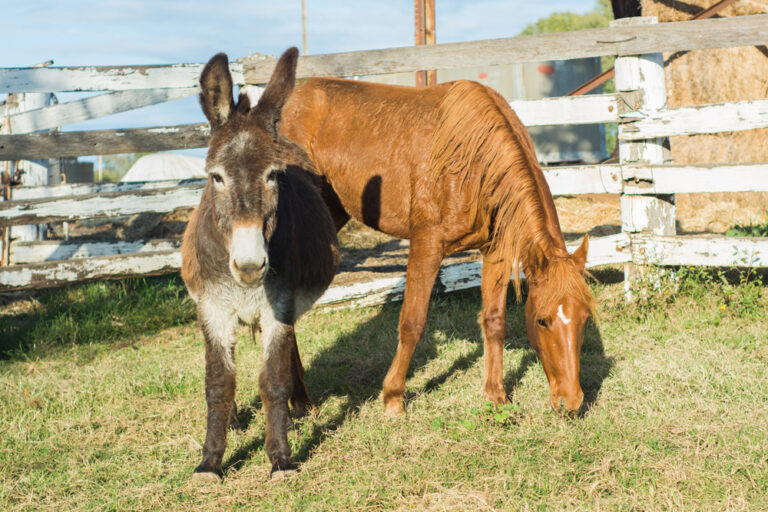How does quality relate to horse feed ingredients? According to the Cambridge Advanced Learner’s Dictionary, quality is “the degree of excellence of something, often a high degree of it, and often refers to how good or bad something is.”
In this article, we’ll help you understand how quality relates to the horse feed world.
Horse Feed Ingredients and Quality
Feed quality can mean different things to different people. Some might say quality is the nutrient content of the feed or ingredients. Others might think it is the consistency of the physical form and appearance of the feed or ingredients.
You know what? They all would be right!
Quality of the feed or feed ingredients encompasses many different aspects from nutrients they provide to the absence of undesirable traits.
For horses to achieve their genetic potential, the relationship between high-quality feed ingredients and their utilization is important. Quality includes the actual amounts of all feed components (the formulation) and the digestibility and metabolism of those components.
Nutritionists and feed manufacturers consistently monitor all aspects of the feed production system to ensure the finished product delivers the nutrients needed to support equine health and performance.
Needed Nutrients
Water, proteins, vitamins, and minerals (both macro and micro) are key nutrients needed by the horse. While clean water should always be available, it will not be discussed further in this article.
Energy, often used interchangeably with the term “calories,” is also required. However, it is not a chemical entity. Energy can be derived from many sources, including starch, sugar, fiber, fats (oils), and protein.
Essential nutrients must be available to the horse in appropriate amounts and ratios for them to thrive. Most of the horse’s diet is comprised of forage, fresh or preserved. Many horses at maintenance or light work can do well on forage and a ration balancer. Nutrients can be supplemented to ensure that energy, protein, vitamins, and minerals are provided to meet the horse’s specific nutrient demands.
In these instances, concentrates/complementary feeds are often necessary.
The concentrate/complementary feeds typically utilize cereal grains, protein feedstuffs, fiber, fats/oils, minerals, and vitamins.
Let’s dive into what I consider can make these components part of high-quality feeds. I will be discussing production processes which are also important in a subsequent article.
Energy Sources
Energy is supplied to the horse mainly from hydrolysable carbohydrates (i.e., starch and sugar), fats, and digestible fiber in their diet. Yes, the horse can get energy from protein, but this is very inefficient and can be detrimental to the animal. Any significant use of protein for energy is typically the body’s last resort in cases of starvation or insufficient food intake.
Hydrolysable carbohydrates in horse feeds are commonly provided by high starch-containing cereal grains, including corn, oats, wheat, and barley. These cereal grains provide energy to the horse. They also provide some essential nutrients, such as protein (amino acids), vitamins, and minerals.
How much of the starch can be digested in the small intestine and how much will reach the hindgut and be fermented by the bacteria there depends on the cereal grain itself, how much is fed, and how the grain is processed.
Cereal grains typically provide low to moderate concentrations of lysine, methionine, and threonine. These are the first three limiting amino acids in the horse. That means they are usually in the shortest supply relative to the needs of the animal.
Cereal grains are also low in key vitamins and are imbalanced in the amount of calcium to phosphorus they provide. This is part of the reason why some sort of balancer is usually required when feeding cereal-rich/only diets.
Corn contains the most energy of all the grains, but it requires heat processing to increase small intestine digestibility. It also provides the least amount of quality protein (i.e., contains the least amount of the above essential amino acids).
Comparatively, oats contain a slightly lower energy content, but they do not require heat processing to optimize small intestinal digestibility. They also provide slightly higher quality protein, and consequently provide more essential amino acids.
Manufacturers must consider cereal grains’ relevant nutrient when adding them into a concentrate or complementary feed. These grains need to be free from dust, molds, and foreign materials.
Fat as an Energy Source
Fat provides about 2.5 times the energy per gram (9 calories/gram) compared to carbohydrates (4 calories/gram). Fats also provide additional energy to the horse without causing a glycemic response (rise in blood sugar, and consequently an increase in insulin).
This is why high-vegetable fat-providing ingredients such as soybeans (roasted or extruded), stabilized rice bran, and stabilized flaxseed are commonly used ingredients in horse feeds. These ingredients allow feed manufacturers to increase the energy in the horse’s diet while keeping starch and sugar low.
Not only are these ingredients highly digestible, but the amino acid profile is better when compared to most cereal grains.
Vegetable or fish-derived ‘pure’ oils can also be used, but these do not provide any additional protein or minerals.
The vitamin content in oils is variable depending on the source. The source can also affect palatability. Any of the oils used in or along with feedstuffs need to be highly palatable, shelf-stable, and not rancid.
Fiber
Horses evolved to digest a high-fiber diet, hence the forage-first approach to feeding them. (Author’s note: See 10 Tips for Feeding Forage to Horses by Dr. Patricia Harris).
To help support digestive health, low-starch and low-sugar fiber sources such as beet pulp, soybean hulls, and oat hulls are used in commercial concentrates/complementary feeds.
Beet pulp and soybean hulls are also considered highly digestible fibers. They effectively provide more energy to the horse and can act as prebiotics. (Author’s note: See Prebiotics for Horses by My Senior Horse Editors).
These pectin-rich feedstuffs are readily digested by the microbes in the horse’s hindgut. Those microbes in turn produce volatile fatty acids that are used for energy. Thus, highly digestible fibers can be a viable replacement for whole cereal grains. This is especially true for horses with higher energy requirements that need a low/restricted starch diet.
On the other hand, feeds based on less digestible fiber sources—such as wheat middlings, oat feed, and straw (hygienic, low dust)—yield less energy (calories). Those might be more appropriate for easy keepers.
Manufacturers formulate feeds carefully to provide a balance of fiber sources appropriate for the type of horse the feed is intended for.
Protein Sources
Most manufacturers use plant protein sources in horse feeds (which are actually the amino acid sources). There are some animal protein sources that also are used. (Author’s note: For more information on how proteins and amino acids are utilized by the horse, see Equine Nutrition Basics: Protein, Vitamins, and Minerals by Dr. Nettie Liburt.)
Plant protein sources such as alfalfa meal, soybeans, soybean meal, and distillers dried grains with solubles (DDGS) are commonly used in horse feeds today. These ingredients vary in their digestibility, protein, and essential amino acids content. They also have varying levels of certain minerals, vitamins, fat, and fiber.
All of this information needs to be considered when including them into a commercial feed.
Soybeans and soybean meal, for example, are commonly used in growing, breeding, and performance horse diets. This is because they are highly digestible protein sources that are high in lysine and other essential amino acids needed for growth, muscle development, and repair.
Dried whey, sourced from milk, is another protein source used in horse feeds and supplements. Whey is often referred to as a high-quality protein source as it has excellent amino acids (lysine, methionine, and threonine) as well as branch-chain amino acids (isoleucine, valine, leucine, and glutamine) that help support optimum muscle development and repair.
However, as with all feedstuffs, other factors need to be considered in your search for a quality feed including whey. For example, if competing under certain regulations in the UK, it would be advisable to ensure all feeds and supplements are BETA NOPS approved, as milk powder can be a theobromine risk depending on the diets cows are fed.
Commercial diets should never use raw or unprocessed soybeans, most peas, or lentils since they can contain protein inhibitors. Cooking and processing these protein sources can reducesor eliminate these anti-nutritional factors that decrease nutrient utilization and digestibility.
Mineral Sources
Minerals are supplied to the horse using the nutrients inherent in the raw materials used to make the feed or added to the diet in inorganic and organic forms. The mineral content of the ingredients used varies due to things like soil, climate, plant genotype, and maturity at the time of harvest.
Allowing for such variability is important when making a quality feed.
Organic minerals are minerals attached to a chelate or proteinates (typically an amino acid) that can help increase the digestibility of minerals. Examples of organic minerals you might see in your feed’s ingredient statement are copper proteinate or zinc proteinate.
Inorganic minerals are mined but not attached to more digestible components. Examples of inorganic minerals you might see in the ingredient statement of your feed include copper sulfate and zinc oxide. In the UK/EU, the level of added minerals is listed under ‘nutritional additives’ on the label.
Balancing the horse’s diet can be tricky business. For example, did you know that oversupplying one mineral might inhibit the absorption of another?
It important to ensure the total diet (feed and forage) provides an appropriate amount of minerals. It is essential that the ratio of certain minerals (such as the ratio of calcium to phosphorus or zinc to copper) is also very important.
Reputable manufacturers formulate feeds carefully. They take into account many factors, including the level of minerals potentially supplied by forage and those inherently supplied by feed ingredients.
Vitamin Sources
Fat-soluble vitamins A, D, E, and K—along with water-soluble vitamins, B-complex vitamins, and vitamin C—are all very important to the health and performance of the horse. Not all need to be provided in the diet at all times, but most do.
As with minerals, the type and source of the vitamin are important to their utilization by the horse.
Synthetic and natural sources have different advantages and disadvantages when included in the equine diet. High-quality concentrates/complementary feeds can provide the horse with highly digestible and shelf-stable vitamins. Manufacturers often use a blend of natural and synthetic vitamins. However they are supplied, vitamins are needed to support key body functions.
Free Amino Acids
The last item to cover is the use of free amino acids in horse feeds, especially the limiting amino acids lysine, methionine, and threonine.
These essential amino acids can’t be synthesized/produced by the horse in sufficient amounts and must be provided by the diet.
Free amino acids can be added to the feed during the manufacturing process in a form that the body can readily use as opposed to having to break apart the proteins into individual amino acids.
Essential amino acids are very important since protein synthesis will stop if there are not enough amino acids present for the horse to utilize.
Depending on the amino acid requirements of the horse, the feed formulation will utilize ingredients that contain high levels of these amino acids. The feed manufacturer also might add free lysine, methionine, and threonine to ensure these key nutrient requirements are met when fed at the recommended feeding level.
In the U.S., look for ingredients such as l-lysine, dl-methionine, or l-threonine in your horse’s feed. This is especially important when looking for quality feed for purposes such as breeding, performance, or just helping to maintain your senior horse’s topline.
In the UK, amino acids are classed as additives and not feed ingredients. Due to this, specific amino acids might not be listed in the ingredient statement even if they are added to the feed.
The amounts of free amino acids added to feeds are carefully formulated by nutritionists. Research has shown that adding more than what the horse needs does not necessarily mean an increase in muscle growth. By keeping the horse’s requirements in mind, the manufacturer can provide optimal nutrition without excessive cost.
Final Words
There are lots of things that determine the quality of feed and feed ingredients. This article highlights just a few.
Don’t be afraid to reach out to your feed manufacturer or an experienced equine nutritionist with questions regarding your horse’s feed and the ingredients used. Feed manufacturers want your horses to perform at their best, too!
Further Reading
- Mycotoxins in Horse Feed. MySeniorHorse.com
- Amber Krotky, MS, PAS. MySeniorHorse.com
- My Senior Horse Video: Overweight Horse Management. Bryan Cassill. MySeniorHorse.com
- A Guide to Equine Ration Balancers. Sarah Nelson. MySeniorHorse.com
- 7 Management Tips to Reduce the Risk of Feed-Associated Equine Colic. Dr. Pat Harris. MySeniorHorse.com
- Equine Nutrition Basics: Protein, Vitamins, and Minerals. Dr. Nettie Liburt. MySeniorHorse.com
-
Amber D. Krotky, MS, PAS, currently serves as Quality and Product Development Manager at MARS Horsecare US Inc (BUCKEYE™ Nutrition) in Dalton, Ohio. She currently sits on the AFIA Equine Committee and the Ethics Committee for American Registry of Professional Animal Scientists (ARPAS). She earned her BS in Animal Sciences in 1999 and her MS in Animal Sciences-Equine Nutrition in 2002 from Oklahoma State University.View all posts





